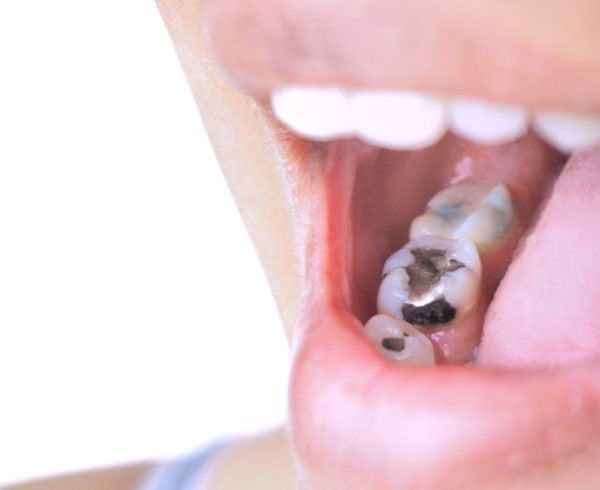The Cost of a Tooth Filling
If you discover that you have a cavity, you’re going to need to get a tooth filling. As implied by the name, fillings are a solution that “fill” the holes in teeth left behind by cavities, replacing the decaying part of a tooth. Fillings can also be used to fill some cracks or chips which are caused by damage, but not by cavities.
When facing having a tooth filled, one of the first questions you’ll be asking yourself is what the cost will be. The final exact total depends on many factors, of course, but I’ve written up a general guide on what to expect when it comes time to pay for your fillings.
Related Article: Dental Implants: The Procedure & How They Work
Amalgam Versus Composite Fillings
There are two primary types of fillings – amalgam and composite. Both have their pros and cons, and both come at different price points. You and your dentist will have to decide together which one you’re going to need for the problem you’re having.
Amalgam Fillings – These are essentially your most basic fillings. Amalgam fillings are mercury resin combined with silver, copper, or tin alloy particles. These fillings will appear dark silver when dried in the teeth, so they are typically used only for small fillings in the back of the mouth. They are also the cheapest option for fillings.
Composite Fillings – Composite fillings are made from combining white acrylic resin with a powdered glass mixture. This allows the filling to be tooth-coloured instead of silver, making it significantly less noticeable. It is also harder than an amalgam filling and less likely to be damaged down the line. However, these benefits naturally come at a higher price point.
There are other types of fillings, as well – gold castings, ceramics, and glass ionomers, specifically. However, these are all quite rare and your dentist will likely not suggest you use any of these for a standard filling. Gold and ceramic are much more expensive and glass ionomers are used primarily in young children who haven’t yet gotten their adult teeth.
Cost of Tooth Filling With and Without Insurance
If you have dental insurance, you’re in luck. Most fillings should be covered at least partially by your plan since they’re a fairly standard part of dental work, which means your out of pocket costs should be less. Of course, you’ll also have to factor in your deductible, co-pays, and monthly payments to decide if using insurance will really be cheaper in the long run, but this will vary from plan to plan. Here, I’ve compiled some average costs just to help you get an idea of the price you’ll likely be looking at, both with and without insurance.
- Amalgam Fillings With Insurance – $50 to $100.
- Amalgam Fillings Without Insurance – $150 to $300.
- Composite Fillings With Insurance – $150 to $200.
- Composite Fillings Without Insurance – $200 to $450.
The Effect of Placement on the Cost of a Tooth Filling
The Cost of Sedation During a Filling
The cost of insurance will include some form of local anesthetic, a numbing agent applied that pain should not be felt during the procedure. However, you may discover that you require sedation in order to receive a filling. This may be a good idea if you have anxiety if you are having a lot of fillings done at one time, or if you have trouble staying still during the procedure. Sedation is not going to be factored into the average price of a filling, so that is an additional cost that will need to be considered. Dental sedation is typically not covered by insurance, so the averages I have provided are the full price.









